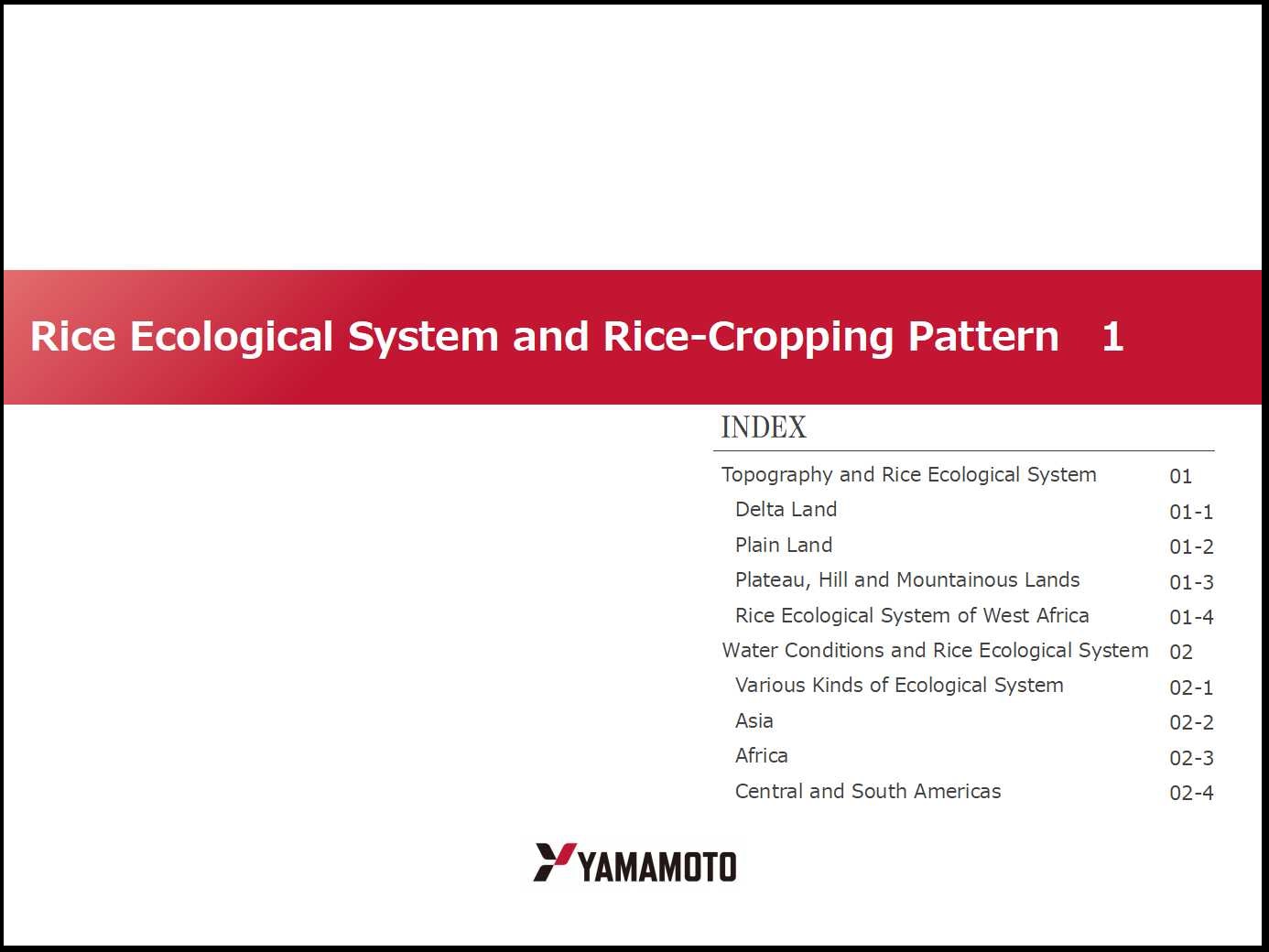17. Rice Ecological System and Rice-Cropping Pattern 1
- INDEX -
Topography and Rice Ecological System
Delta Land
Plain Land
Plateau, Hill and Mountainous Lands
Rice Ecological System of West Africa
Water Conditions and Rice Ecological System
Various Kinds of Ecological System
Asia
Africa
Central and South Americas
In tropical zones, wide varieties of rice-cropping is performed to accommodate the diversity of locational and environmental conditions. The rice ecological system is to address the connection of these locational and environmental conditions and rice-cropping as one system. In the following part of this section, we first try to generally categorize the rice ecological system, and then try to describe the situation of rice-cropping in each category.
Topography and Rice Ecological System
The topography of the areas where rice-cropping is performed throughout the developing countries of the world can be generally grouped into delta, plain, table-land, hill and mountainous categories.
Delta Land
Frequently seen in tropical Asia where precipitation is high. The typical delta formation can be seen along the downstream of the Mekong, Chao Phraya, Irrawaddy, Ganges, and Brahmaptra Rivers. At an extremely low altitude, where frequently water control is difficult, the soil is rice but yield is generally low. During the rainy season, upstream water can overflow and some land can be under a couple of meters of water; therefore floating rice is used. In fact, it is estimated that floating rice is cultivated on approximately 4 million hectares in Southeast Asia. Outside Asia, an important delta can be seen in the river mouth of the Nile in North Africa.
Plain Land
This category of land includes plains along large and small rivers and those along coastline. Plains along rivers are the most universal land for rice-cropping. It often happens that terraces are formed along the rivers. From the river plain, terraces of low, medium and high height are formed with a gradual increase of inclination, creating an undulant hill or plateau. An undulated hill is used for shifting cultivation, while a declined land is covered with forests. Lowland rice is cultivated in low to medium-height terraces and plains along rivers, while upland rice and other field crops re cultivated in high terraces.
Some of the plains along rivers will be flooded by high water in the rainy season, forming flooded fields. Those of small scale are difficult to tell from flooded delta or plains along rivers. In the areas along a big river, a huge flooded field of tens of thousands of hectares is likely to be formed. There, rice-cropping is performed while the flooded water still exists.
